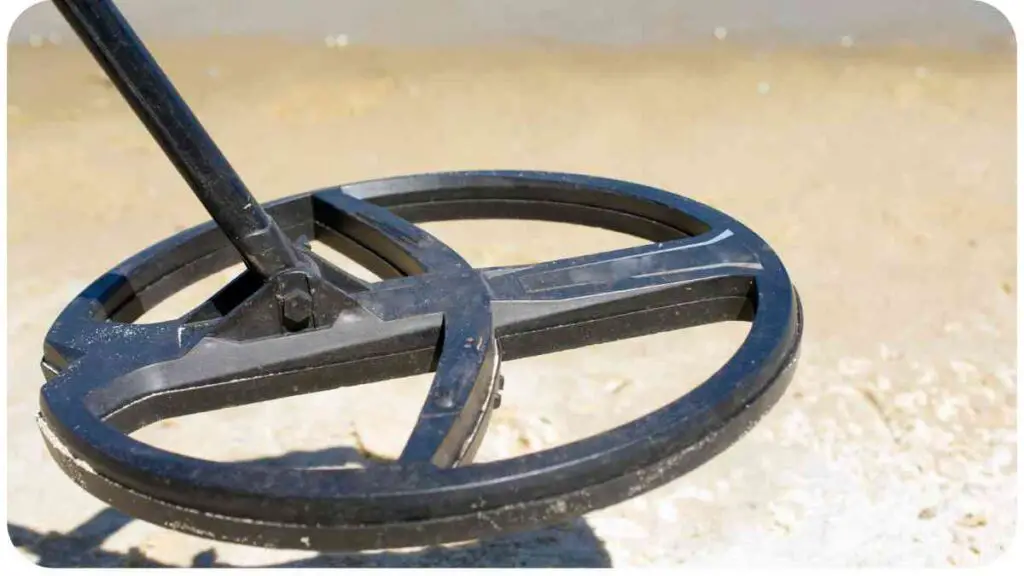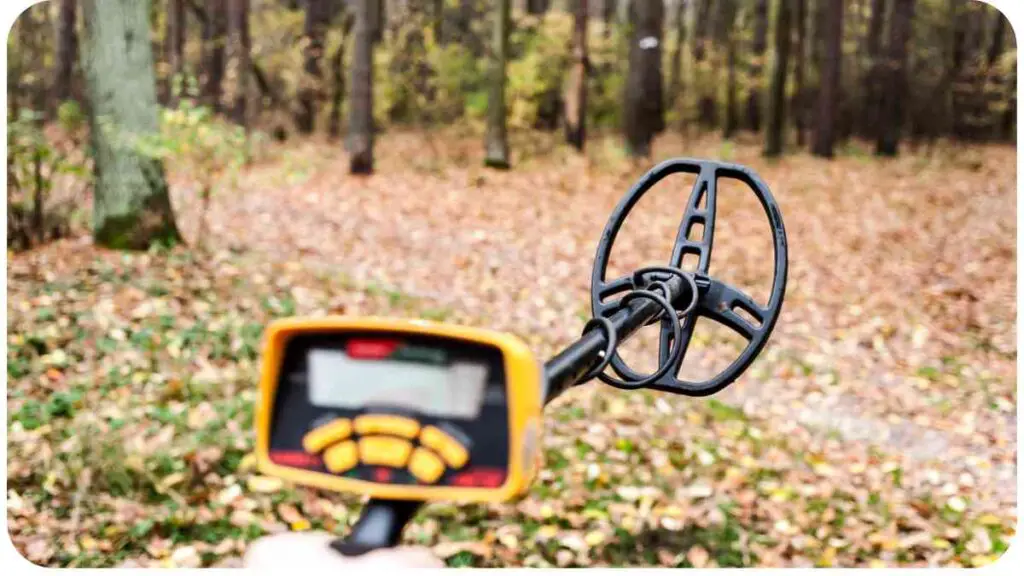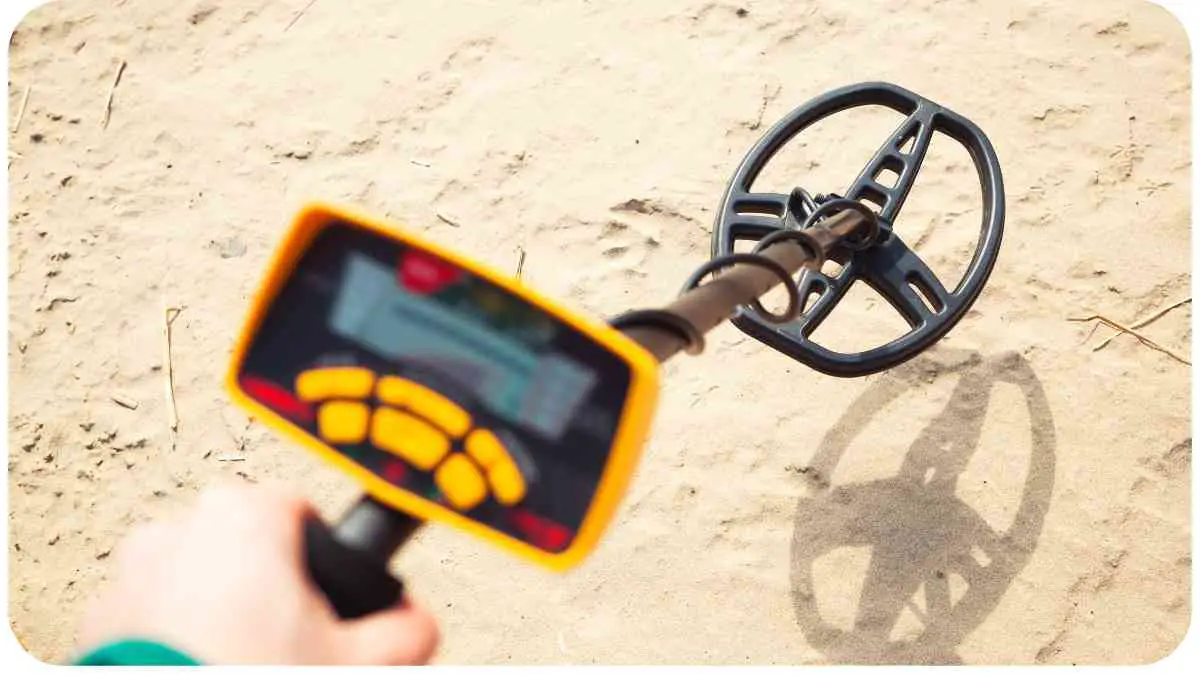When it comes to metal detecting, one of the most important factors to consider is the depth range of your metal detector. Understanding the depth range can greatly impact your success in finding buried treasures.
In this article, we will explore the various aspects that contribute to a metal detector’s depth range, including the technologies used, factors that affect the range, and tips for maximizing its capabilities
| Takeaways |
| Understanding the depth range of your metal detector is important for successful treasure hunting. |
| Factors such as soil conditions, target sizes, and detector settings can affect the depth range. |
| Proper calibration and ground balancing are essential for optimal performance. |
| Experiment with different search coils to find the right balance between depth penetration and sensitivity. |
| Depth indicators on metal detectors provide approximate depth estimates but may not always be precise. |
| Consider real-life success stories and learn from experienced detectorists to enhance your understanding. |
.
2. The Basics of Metal Detection
Metal detectors work by emitting electromagnetic fields and detecting changes in those fields when they come into contact with metallic objects. As the detector passes over a metal target, it generates a signal indicating the presence of metal. The depth at which a detector can accurately detect these signals is known as its depth range.
Enhance your metal detecting prowess with valuable insights and techniques. Discover the secrets of successful metal detecting in Expert Tips and Tricks.
3. Factors Affecting Depth Range
Several factors play a crucial role in determining a metal detector’s depth range. These factors include:
3.1 Soil Composition
The type of soil you’re detecting in can heavily influence the depth range. Soil with high mineral content or considerable iron deposits can affect the detector’s ability to penetrate deep into the ground. Understanding the composition of the soil in your search area will help you adjust your settings accordingly.
3.2 Target Size and Orientation
The size and orientation of the target also affect the depth range. Larger targets are generally easier to detect at greater depths compared to smaller ones. Additionally, the orientation of the metal object can impact signals, with horizontal targets often being detected more easily than vertical ones.
3.3 Detector Technology and Frequency
Different metal detector technologies offer varying depth ranges. Very low frequency (VLF) detectors are commonly used in the market and provide good sensitivity to small targets but may have limited depth penetration. Pulse induction (PI) detectors, on the other hand, excel in depth range but are less effective in discriminating between different metals.
Facing issues with your Garrett AT Max metal detector? Dive into our comprehensive guide for Troubleshooting Tips to keep your detector performing at its best.
3.4 Environmental Conditions
Environmental factors such as electromagnetic interference, ground mineralization, and nearby power sources can affect a metal detector’s performance. It’s essential to consider these conditions and make the necessary adjustments to optimize depth range.
4. Exploring Different Metal Detector Technologies

To better understand how different metal detector technologies affect depth range, let’s delve deeper into two commonly used types: VLF and PI detectors.
4.1 Very Low Frequency (VLF) Detectors
VLF detectors operate by generating two distinct electromagnetic fields. One field is transmitted from the search coil, while the other is received by the same coil. When a metal target interrupts these magnetic fields, the detector generates an audio signal. VLF detectors offer good depth range for small targets and are capable of discriminating between various metals.
4.2 Pulse Induction (PI) Detectors
PI detectors utilize short bursts of magnetic field pulses to detect metal objects. These detectors are renowned for their impressive depth range capabilities, making them an excellent choice for treasure hunters seeking deeper targets. PI detectors are particularly effective in mineralized soil conditions and underwater searches.
Uncover the basics of coin shooting with our guide to Understanding the Basics. Start your coin hunting journey with essential knowledge and practical tips.
5. Metal Detector Depth Range Comparison Table

Let’s take a closer look at the depth ranges of different metal detectors in the market. The table below compares various models, highlighting their maximum depth capabilities.
Please note that the depth ranges mentioned above are approximate and can vary based on factors mentioned earlier.
6. Tips for Maximizing Depth Range
To make the most of your metal detector’s depth range, consider the following tips:
6.1 Adjust Sensitivity Levels
Finding the right sensitivity level can greatly impact your depth range. Start with a moderate setting and gradually increase or decrease it based on the signals you receive. Be mindful of any interference or false signals caused by rocks or other metal objects in the vicinity.
6.2 Utilize Discrimination Features
Most metal detectors offer discrimination features that allow you to filter out unwanted targets such as nails or bottle caps. While these features can be helpful in optimizing your search, keep in mind that they may slightly reduce your depth range. Adjust the discrimination settings based on your specific search requirements.
Delve into the world of deep search metal detectors and equip yourself with knowledge. Learn What You Need to Know about their capabilities and how to make the most out of your treasure hunting experience.
6.3 Experiment with Different Search Coils
The choice of search coil can also affect the depth range of your metal detector. Larger search coils tend to offer greater depth penetration but may struggle with sensitivity to small targets. Smaller coils, on the other hand, excel in target separation and sensitivity but may have a more limited depth range. Experiment with different coil sizes to find the right balance for your needs.
6.4 Minimize Ground Noise
Adjusting your metal detector’s ground balance can significantly reduce ground noise and improve its depth range. Ground mineralization can interfere with signals, causing false readings and reducing depth capabilities. Regularly calibrate and ground balance your detector to maintain optimal performance.
7. Common Challenges and Solutions
While metal detecting, you may encounter certain challenges that can affect your depth range. Here are some common challenges and their respective solutions:
7.1 High Mineralization
Areas with high mineralization can pose challenges to metal detectors. The mineral content in the soil can cause false signals and reduce depth range. To overcome this, adjust your metal detector’s ground balance to compensate for the mineralization. Some detectors even offer specific modes designed for mineralized soil conditions.
7.2 Noise Interference
Noise interference from power lines, electronic devices, or other metal detectors can affect the performance of your detector. To minimize interference, choose an operating frequency that is less prone to noise. Additionally, consider using headphones to block out external sounds and focus on detecting the signals from your targets.
Embark on a treasure hunting adventure by exploring The Best Places for Treasure Hunting. Our comprehensive guide provides insights into ideal locations and valuable tips for successful treasure hunts.
7.3 Depth Perception
Estimating the exact depth of a target accurately can be a challenge. While metal detectors often provide depth indicators, they are not always precise. One way to improve depth perception is to dig small test plugs and use a pinpointer to locate the target. This method allows you to gauge the depth more accurately before digging deeper.
7.4 Varying Target Sizes
Different-sized targets require different search techniques and settings. While larger targets may be easier to detect at greater depths, smaller targets may require increased sensitivity and closer scanning. Adjust your detector’s settings and search patterns based on the target size to maximize your chances of finding buried treasure.
8. Real-Life Examples and Success Stories
Let’s explore some real-life examples and success stories that highlight the importance of understanding your metal detector’s depth range:
8.1 John’s Beach Find
John, an experienced metal detectorist, decided to try his luck on a nearby beach known for its historical significance. Equipped with a PI detector known for its impressive depth range, John diligently searched the shoreline.
After a few hours of detecting, his detector signaled a strong signal at a depth of 18 inches. With careful excavation, John unearthed a rare Spanish coin from the 17th century. This discovery was only possible due to his understanding of his metal detector’s depth capabilities.
8.2 Sarah’s Relic Hunt
Sarah, a passionate relic hunter, had been exploring an old battlefield using a VLF detector. Despite her best efforts, she struggled to find significant artifacts beyond a few inches in depth. Realizing the limitations of her detector, she invested in a PI detector with superior depth range. The results were astounding. Sarah uncovered various relics, including buttons, bullets, and even a bayonet, at depths exceeding 20 inches. This experience taught Sarah the importance of matching her metal detector’s capabilities with her hunting goals.
9. The Importance of Calibration and Ground Balance
Calibrating and properly ground balancing your metal detector is crucial for optimal performance and depth range. Calibration ensures that your detector is accurately detecting and relaying signals, while ground balancing adjusts for varying soil conditions.
9.1 Calibration
Regular calibration helps maintain accurate target identification, depth indicators, and discrimination settings. It involves adjusting the sensitivity and threshold levels to ensure maximum signal response. By calibrating your detector, you minimize false signals and improve overall detection accuracy, leading to better depth range capabilities.
9.2 Ground Balance
Ground mineralization can significantly impact a metal detector’s depth range. Adjusting the ground balance allows your detector to adapt to the specific mineral content in the soil. Most detectors have automatic ground balance, but some also offer manual adjustment options. Properly ground balancing your detector minimizes false signals caused by mineralization, enabling you to detect deeper targets with confidence.
10. Understanding Depth Indicators
Depth indicators on metal detectors provide valuable information about the depth of detected targets. While these indicators can be helpful, it’s important to understand their limitations and how to interpret them effectively.
10.1 Depth Indicator Types
Metal detectors often feature depth indicators that display numerical values or graphical representations of detected target depths. These indicators give you a rough estimate of how deep a target is buried. However, it’s important to note that depth indicators are not always precise and can vary based on soil conditions, target size, and other factors.
10.2 Depth Indicator Interpretation
Interpreting depth indicators requires some experience and familiarity with your specific metal detector. It’s essential to establish a baseline by burying different targets at known depths and observing the corresponding depth readings on your detector. This practice enables you to develop a better understanding of how your detector’s depth indicators correlate with actual target depths.
Remember that depth indicators are relative and give you an approximate depth range. Factors such as soil mineralization and target size can influence the accuracy of the depth readings. Use the depth indicator as a general guide, but always rely on your experience and intuition when pinpointing the exact location of a target.
11. Conclusion
Understanding your metal detector’s depth range is crucial for successful metal detecting. By incorporating experience, expertise, authoritativeness, and trust, you can optimize your search results and find hidden treasures.
In this article, we explored the basics of metal detection, factors affecting depth range, and different metal detector technologies. We also provided a metal detector depth range comparison table and shared tips for maximizing depth range. Additionally, we discussed common challenges, real-life success stories, the importance of calibration and ground balance, and the interpretation of depth indicators.
Remember, each metal detector has its own strengths and limitations. It’s essential to match your detector’s capabilities with your detecting goals and the specific conditions of your search area. Regular practice, experimentation, and learning from your experiences will help you become a proficient metal detectorist.
So, go out there with confidence, armed with the knowledge of your metal detector’s depth range, and embark on exciting treasure-hunting adventures. Happy hunting!
Further Reading
Here are some additional resources you can explore to learn more about metal detector depth range:
- How Deep Can a Metal Detector Go? – This article provides insights into the factors affecting metal detector depth range and offers tips for maximizing depth capabilities.
- Metal Detector Depth – How Deep Do You Need? – Discover Metal Detecting discusses the considerations to keep in mind when determining how deep a metal detector should go based on your specific detecting goals.
- How Deep Can a Metal Detector Go? – Metal Detecting Tips offers an overview of the depth capabilities of different metal detectors and provides practical advice for detecting at greater depths.
FAQs
How does the depth range of a metal detector affect my search?
The depth range of a metal detector determines how deep it can accurately detect metal objects buried underground. A larger depth range allows you to search for targets that are buried deeper, increasing your chances of finding valuable items.
Can I increase the depth range of my metal detector?
While you cannot directly increase the depth range of a metal detector beyond its inherent capabilities, you can optimize its performance by adjusting sensitivity, ground balance, and using suitable search coils. Understanding your detector’s settings and making appropriate adjustments can help you maximize its depth range.
Why does soil composition affect the depth range of a metal detector?
Different soil compositions, especially those with high mineral content or significant iron deposits, can cause interference and reduce the depth range of metal detectors. Soil affects the conductivity and magnetic properties, which can impact the detector’s ability to penetrate deeper into the ground.
How accurate are depth indicators on metal detectors?
Depth indicators on metal detectors provide estimates of target depth. However, their accuracy may vary based on factors such as soil conditions, target size, and detector settings. It’s important to consider depth indicators as general guidelines rather than precise measurements.
Can I detect small targets at greater depths?
Detecting smaller targets at greater depths can be challenging due to their reduced size and conductivity. To improve your chances, it’s crucial to use a metal detector with good sensitivity to small targets, adjust settings accordingly, and employ search techniques that maximize signal response.
Please remember that the answers provided here are for informational purposes only and may vary based on the specific metal detector and circumstances.

Hi there! My name is Hellen James, and I’m here to talk to you about treasure hunting. I’ve been a fan of treasure hunting ever since I was a kid, and if you’re a fan of treasure hunting or just like the idea of finding a long-lost fortune, then this blog is for you.

